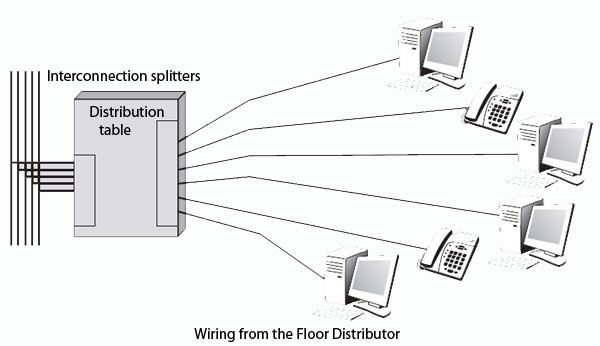Ethernet networks at 10 Mbit/s were the first to be introduced in the market. They still represent a significant proportion, although standards to 100 Mbit/s tend to supplant them. This section reviews the various products of the Ethernet shared working at a speed of 10 Mbit/s.
We’ll be covering the following topics in this tutorial:
Cheapernet
Cheapernet is a shared Ethernet LAN using a particular coaxial cable, standardized under the 10Base2 term. The coaxial cable used is no longer the yellow armored cable but a late unshielded brown cable, also called thin RG-58 cable. This cable has less resistance to electromagnetic noise and induces a greater attenuation of the signal.
The strands are limited to 185 m instead of 500 m. Repeaters are of Ethernet and work to 10 Mbit/s. The total length up to 925 m or 1540 depending on the version. The constraints are the same as for the Ethernet network with respect to the round trip time. However, to obtain comparable quality, limit the distance without repeaters. The maximum length is less important here because the Cheapernet network is a capillary network to go to the end user at less cost.
Starlan
Born from an AT & T study on the quality of the telephone wiring from the floor distributor, the Starlan network meets a different need for the Cheapernet network. The capillary networks of the company, speeds of 1 Mbit/s were acceptable in the 1980s. The arrival of Starlan corresponded to the will to use capillary infrastructure, that is to say, the telephone wiring, from the floor distributor (see Figure).
Since the cables from the floor distributor hardly allowed a 1 Mbit/s throughput, Ethernet technology was taken up by adapting a star wiring at a speed of 1 Mbit/s. It is always the access method CSMA / CD is used on a network active star, like the one shown in Figure.
Given the large number of companies have renewed their wiring with quality son pairs, the Starlan to 10 Mbit/s encountered a massive success. The Starlan networks to 10 Mbit/s are also called Ethernet 10 Mbit/s on twisted pairs of son to indicate that the module is the same as that of Ethernet networks over coax to 10 Mbit/s.
The standard IEEE 802.3 Starlan 1Base5 makes available a maximum of five nodes, or hubs, successive from the base node included. Between two nodes, a maximum distance of 250 m is permitted. In reality, we find exactly the same constraints as in the Ethernet network, that is to say a maximum round-trip time of 512 microseconds between the two most distant points, since the speed is 1 Mbit/s instead of 10 Mbit/s. For the LAN Starlan 10 Mbit/s, we find the value of 51.2 microseconds.


The hub is an active node capable of regenerating the signals received to all output lines, so that there is diffusion. The hub allows connection of terminal equipment on the ends of branches Starlan.
Typically, each device corresponds to a Starlan connection socket. However, to add an additional terminal in an office, it would draw a cable from the dispatcher room or the nearest sub-distribution, provided that there is still a possible exit. An alternative is to place the same outlet several machines connected in series, as shown in Figure.

 Dinesh Thakur holds an B.C.A, MCDBA, MCSD certifications. Dinesh authors the hugely popular
Dinesh Thakur holds an B.C.A, MCDBA, MCSD certifications. Dinesh authors the hugely popular